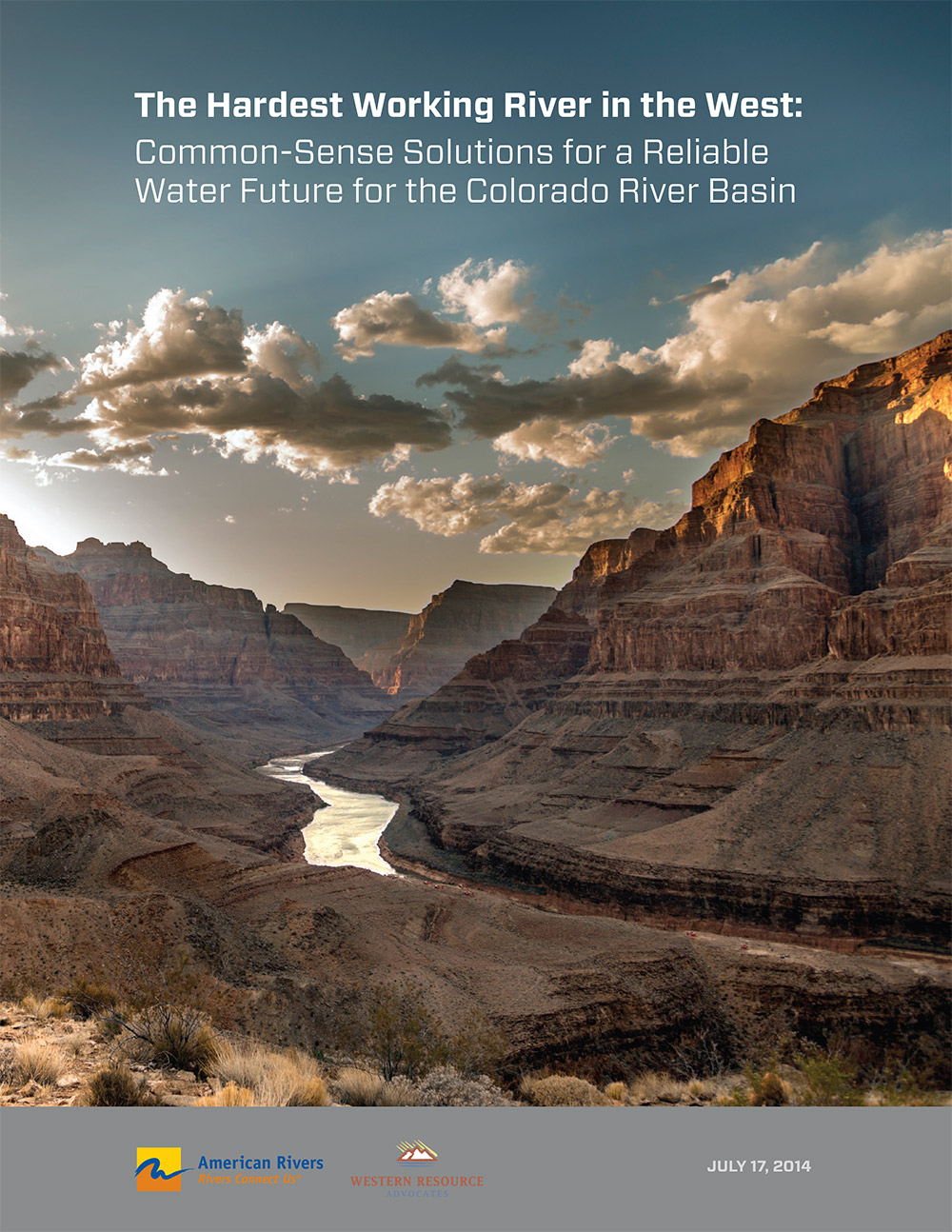The facts are clear: the demand for water from the Colorado River exceeds the supply. By 2060, we can expect a 3.8 million acre-foot deficit in river supply. Coming up short could put 36 million people’s drinking water, agriculture, future economic growth, the $26.4 billion outdoor recreational economy, and a quarter-million jobs in jeopardy. In addition, the river’s imbalance is wreaking havoc on the West’s natural ecosystems, harming world-class fisheries and unique natural wonders. In addition to identifying the challenges, the report details five affordable solutions to ensure a reliable water future, improve the health of the Colorado River, grow the economies of the seven basin states, and protect essential western natural habitats.
- Municipal conservation, saving 1 million acre-feet through improved landscaping techniques, rebate programs that incentivize water-saving devices, installing new appliances and fixtures, and standardized, routine water audits across municipalities.
- Municipal reuse, saving 1.2 million acre-feet — Wastewater and gray water can be treated for potable use, and reused for irrigation, industrial processing and cooling, dust control, artificial lakes and replenishing groundwater supply. Rainwater harvesting using innovative new technologies is a simple additional step.
- Agricultural efficiency and water banking, saving 1 million acre-feet — Agriculture is the river’s largest water use, extending across 5.7 million acres of arid western land and consuming more than 70% of the river’s water. Voluntary irrigation efficiency, regulated irrigation, rotational fallowing, crop shifting and innovative irrigation technologies are already being used by farmers. In addition, water banking is a market-based approach that allows farmers (and others) to bank their unused water voluntarily.
- Clean, water-efficient energy supplies, saving 160 thousand acre-feet — To reduce the need for water to cool thermoelectric power plants, Colorado River basin states can continue to pursue energy efficiency and renewable sources of energy like wind, solar photovoltaics, and geothermal, which require little or no water.
- Innovative water opportunities, generating up to 1 million acre-feet — Inland desalination in certain areas with brackish groundwater and surface water is a viable option to stretch water supplies, potentially generating 620,000 acre-feet of water. In addition, dust-on-snow management can help save a minimum of 400,000 acre-feet of water while removing dense invasive plants in upland areas will save a minimum of 30,000 acre-feet of water.


